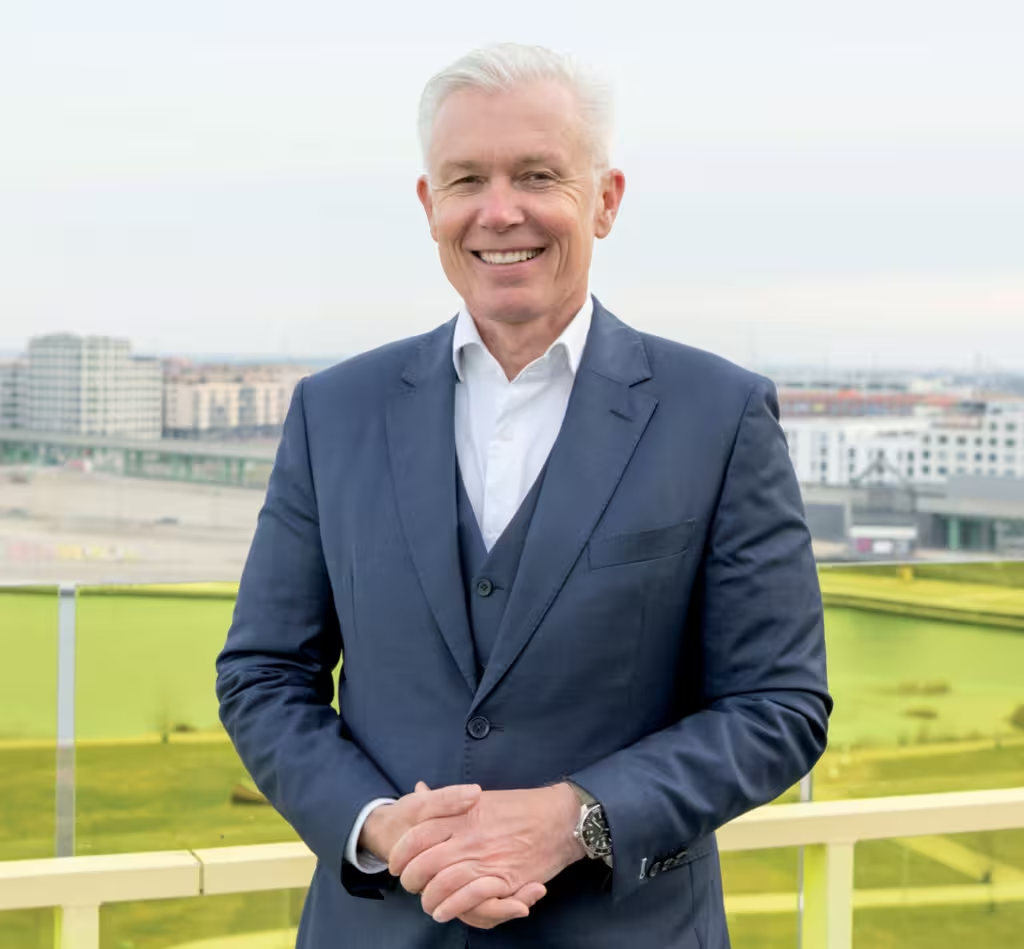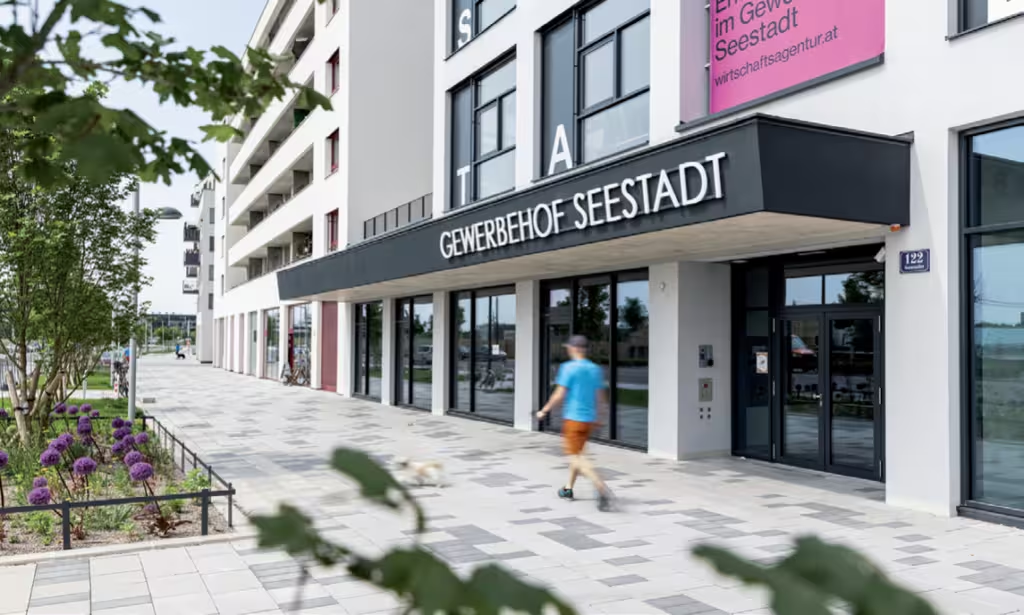The aspern Seestadt is flourishing as a residential and business location alike – this was underlined by an evaluation of its development to date.

Aspern Seestadt, the new district in the north-east of Vienna, is currently just over a third developed. A new target system has been developed for further expansion - both of residential and commercial space. Robert Grüneis has been CEO of Wien 3420 aspern Development AG, the development company responsible for the realization of aspern Seestadt, since 2023. The energy and smart cities expert is responsible for product development, property management and investments and provides a deep insight into the current development status of Seestadt and outlooks for the future.
What was the motivation for having the comprehensive EVA performance report prepared for aspern Seestadt?
Robert Grüneis: aspern Seestadt is one of the largest urban development projects in Europe and will be the new regional center of Donaustadt, the most populous district in Vienna. Depending on your point of view, the development of Seestadt began almost 20 years ago with the master planning. Or in 2010, with the groundbreaking ceremony for the lake excavation. At the end of 2012, the very first building, tz1 of the Seestadt technology center, was completed, and in autumn 2014 the very first pioneers moved into their apartments. Since then we have built three large quarters, and two more are currently in preparation. Seestadt will continue to grow until the 2030s - by more than half. Our aim as developers is to get better from quarter to quarter. To do this, we need data to learn and sparring with experts. Feedback from those who live, work, go to school or have founded a company in Seestadt is essential. We therefore decided in 2022 to evaluate where Seestadt stands today, how our development goals and strategies fit in with today's framework conditions, and where our stakeholders and experts believe we still have some catching up to do or potential. However, since our main concern was future management, a new catalog of goals was subsequently developed. In order to measure whether we are achieving our goals, a set of key performance indicators - KPIs - was developed. We want to report regularly on this in the future.

What are the most important topics you address in the EVA report?
green ice: We commissioned a team from Urban Innovation Vienna to accompany us in this process. Together we defined eight fields of action - from the development of the urban structure and public space, to quality of life and mobility, to the business and innovation location.
In the EVA report you did a deep dive based on interviews. What are the most important findings?
green ice: In the deep dive, there was an intensive exchange in the form of individual discussions and focus groups with a total of 116 people. The Seestadt was attested to have already developed a lot of strength both as a place to live and as a business location and to have lived up to its role as a pioneer in terms of sustainability. The high proportion of open space and the mix of different urban functions were highlighted. We stack them on top of each other as much as possible, which creates short distances and plenty of space for greenery. The exemplary modal split was also praised; today 78 percent of journeys are already made using environmentally friendly transport. We owe this not only to the excellent public transport connections, but also to our mobility concept, which in many cases offers attractive alternatives to private motorised transport. This also contributes to the extremely low land use. This was rated very positively, as were our climate protection strategies in general - from the CO2 savings through smart construction logistics and recycling of materials to the consistent implementation of sustainability standards in Seestadt properties or the sponge city.
Where are there still challenges – based on the EVA report?
green ice: Urban development is a very long-term process - the framework conditions are constantly changing along the way. That's why we will continually re-evaluate our KPIs, because who can really say what the world will look like in ten years? What we do know is that the climate is changing rapidly. That's why we work very closely with researchers to develop solutions for adapting to climate change. With ASCR, Aspern Smart City Research, we as Vienna 3420 are even involved in an internationally renowned energy research project. And of course the economy is also changing. We have to ask ourselves what real estate and infrastructure companies will need in the future. For example, we are currently very busy with city logistics and operational mobility management.
How do you ensure a 'healthy' mix of industries at the Aspern Seestadt business location?
green ice: The wide range of companies that are now located in Seestadt was highlighted in the deep dive. This ranges from numerous doctors, therapists and creatives, to food producers such as the ice cream parlor at Schwedenplatz or the Kasnudl Stadtküche, young start-ups, the large international technology player Hoerbiger or the globally successful biotech company Takeda, which is building its laboratory of the future in Seestadt. Of course, none of this happened on its own, but because a wide variety of strategies were combined from the very beginning. The fact that the Vienna Business Agency built the Seestadt Technology Center in 2012, a plus-energy building for technology-oriented companies and research institutions as the first building ever, was a real statement. Since then, work has been consistently carried out on the innovation ecosystem. Networking is very much encouraged. Not only have we installed a dedicated contact person for business people in the district management team, but we also work closely with a local entrepreneur network. In addition, as a development company, we take care of the infrastructure. The 'managed shopping street', with which we have ensured that local supplies and restaurants grow with the district from the very beginning, is not only appreciated by the residents, but also by the employees in the companies and the people from the surrounding area. In order to implement this successful concept, we founded a joint venture with Spar European Shopping Centers in 2014. The managed shopping street is one of the ideas with which we are also seen as an international role model.

aspern Seestadt is considered a showcase model for a smart city, especially in terms of energy efficiency. What do future projects look like in terms of sustainability?
green ice: At the moment we are working together with several developers on a cross-construction site energy district solution for the 'Seecarré' district. We are well on the way and I am confident that we will succeed in creating a truly groundbreaking project.
What distinguishes the Vienna Business Agency's commercial yard in aspern Seestadt?
green ice: The industrial estate shares a building site and a beautiful park-like courtyard with several residential buildings in the middle of the residential area. Nevertheless, it offers an underground loading yard that even has space for semi-trailers, while children can play undisturbed in the playground above. The building is extremely robust, production can be carried out on all levels and there are ideal storage rooms. Nevertheless, its architecture is so appealing that people keep asking whether they can also rent or buy apartments in the industrial estate.
What new projects can the residents of Seestadt look forward to?
green ice: We are currently building the new waterfront promenade on the north bank of the lake. It will be a promenade with lots of greenery and attractive little places to chill out or play. The buildings behind it will be spectacular - with arcades facing the lake, restaurants with beer gardens and shops on the ground floor, and above that, restaurants and apartments in a prime location.
.